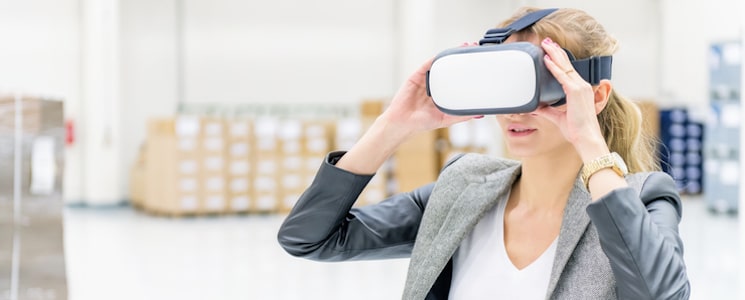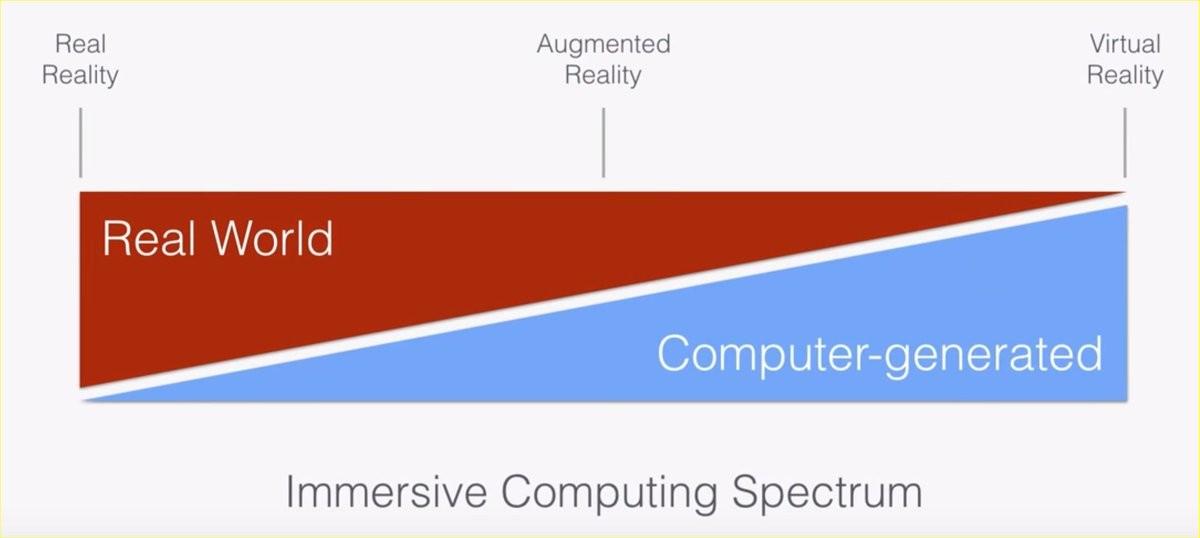
AR and VR are buzz words that have been trending around many industries including manufacturing for a while now. With so many companies claiming to provide AR/VR solutions for all types of different needs, this blog addresses how these technologies impact manufacturing and what you need to consider when adopting them.
What is AR? What is VR? Let’s get definitions of these solutions out of the way first. Both are related to two largely synonymous terms–mixed reality and computer-mediated reality. Wikipedia defines augmented reality (AR) as a direct or indirect live view of a physical, real-world environment whose elements are “augmented” by computer-generated perceptual information, ideally across multiple sensory modalities, including visual, auditory, haptic, somatosensory, and olfactory. The overlaid sensory information can be constructive (i.e. additive to the natural environment) or destructive (i.e. masking of the natural environment) and is spatial registered with the physical world such that it is perceived as an immersive aspect of the real environment. This is not to be confused with virtual reality (VR) where an interactive computer-generated experience taking place within a simulated environment. AR alters one’s current perception of a real-world environment, whereas VR replaces the real-world environment with a simulated one. The following picture depicts this very nicely:

How does ARVR impact manufacturing industry? Here are a few benefits when deployed correctly:
- Reduction in Assembly Errors: This is crucial in complex, highly regulated manufacturing and sustainment environments such as aerospace and defense industries whereas a single error could cost millions of dollars.
- Reduction in Assembly Time: Higher productivity equates into enhanced cost savings.
- Reduction in Training Requirements and Time: Standardization of intuitive, readily reusable training content.
- Increase Work Instructions Recall: Fast references to relevant and current work instructions.
- Transfer of “Tribal Knowledge”: Expert knowledge can be captured, shared at the time work is performed as well as in the future to enhance on-boarding of new employees.
All these points translate into cost savings, increased quality, and higher customer satisfaction.
Modern, complex manufacturing involves assembling hundreds or thousands of components in a precise sequence as quickly and efficiently as possible. Even though we’ve come a long-way from the days of paper-based work instructions, thanks to MES solutions like iBase-t’s Solumina, current work instructions are now being served up via stationary displays (e.g., laptop or workstation PC). Augmented reality applications serve up work instructions in a technicians’ field of view, via VR goggles, so they no longer need to travel back and forth between tasks to review documentation or enter data. This keeps your most valuable resources focused, productive, and doing what they do best.
Additional benefits of AR in manufacturing is support of field personnel. In many situations field services technicians may require expert support when servicing equipment from long distance. AR minimizes the need for experts to travel to customer worksites by providing a real-time, “see what I see” kind of telepresence experience. This allows experts to see work being performed through the eyes of a technicians as they are performing maintenance tasks from anywhere.
In addition to time and cost savings, AR related technologies can also have a positive impact on quality assurance. Not only can these technologies deliver relevant multi-media information to QA engineers on the floor, it can also be used to record problems on the spot as they arise. We often hear from our customers that documenting nonconformance issues can be challenging and difficult. Accurately describing issues in writing is time consuming and burdensome on staff. Since a picture is worth a thousand words, quality staff can capture video on the spot and attach it against any product discrepancies. Sort of a show and tell, with a focus on the “show.”
We are certain that AR, possibly VR as well, technology can transform the user experience for complex, discrete manufacturing organizations. One of the most important things to consider when adopting AR/VR solutions for your workforce is to clearly identify your goals. Simply adopting technology for technology sake is not a goal. Benefits such as enhancing user experiences, cost savings, better resource utilization and customer experience, etc. all need to be weighted before you adopt these technologies. The possibilities are waiting for you.

